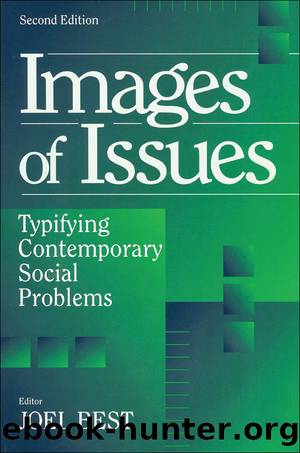Images of Issues by Joel Best

Author:Joel Best [Best, Joel]
Language: eng
Format: epub
Tags: Social Science, General
ISBN: 9781351310260
Google: Lco3DwAAQBAJ
Publisher: Routledge
Published: 2017-09-29T03:28:43+00:00
7 A variety of questions might be raised about this evidence. It is, for exampie, the product of organizations whose job it is to define and document devi-anee, and is thus as likely to reflect this organizational mandate as it is to describe accurately some âobjectiveâ empirical reality (see Kitsuse and Cicourel [1963], on the important distinction between ârate-producing processesâ and âbehavior-producing processesâ). Both DAWN and the NIDA surveys were explicitly set up to allow policymakers to make claims about the prevalence ofâ and the dangers presumed to follow fromââillicit drug abuse.â Mere âyesâ responses regarding use in the past year or even in oneâs lifetime are typically taken as indices of abuse. On the other hand, some critics claim that the NIDA high school surveys miss the very dropouts who are most prone to drug abuse, or that the household surveys sample only one household member. We focus only on the inferences that have been made on the basis of this âbestâ âofficialâ evidence. We will assume for the sake of argument that these data are reasonable measures of something ârealâ and ask (1) how well they support the many claims of mass destruction purportedly based on them, and (2) irrespective of evidence, why such claims have achieved such prominence.
8 The DEA later took a very different view, regularly reporting that crack use had spread far and wide with terrible consequences. Our point in citing this early memo is to show that the crack scare has had a momentum of its own, racing ahead of DEA experts and other official evidence upon which it was purportedly based.
9 Even if we accept hyperbole as a ânormalâ means of attracting readers, viewers, and voters, it is still not possible to explain the character of the crack scare in terms of simple exaggerations of official evidence. Journalists consistently caricatured crack use and users and routinely employed rhetoric that is rare in other types of news stories. They also did not hesitate to make claims for which there was no evidence to âstretch.â
10 This advertising effect was probably strongest in 1986, the first year of the crack scare, when crack was new. Antidrug campaigns probably also have different effects on different populations: they may frighten away some middle-class experimenters, while increasing interest among those most prone to abuse. In 1986 one student told Arnold Trebach that when he heard that crack was âbetter than sex and that it was cheaper than cocaine and that it was an epidemic, I wondered what I was missing. I questioned why I seemed to be the only one not doing the drug. The next day I asked some friends if they knew where to get someâ (Trebach 1987:7).
11 This drug scare has produced a growing number of drug research, treatment, and policy professionals appalled at the gap between realities and rhetoric, between what works and what is being done, between what the United States does and what other comparable industrial democracies do. Led by Baltimore Mayor Kurt
Download
This site does not store any files on its server. We only index and link to content provided by other sites. Please contact the content providers to delete copyright contents if any and email us, we'll remove relevant links or contents immediately.
The Secret History by Donna Tartt(18843)
The Social Justice Warrior Handbook by Lisa De Pasquale(12141)
Thirteen Reasons Why by Jay Asher(8792)
This Is How You Lose Her by Junot Diaz(6789)
Weapons of Math Destruction by Cathy O'Neil(6142)
Zero to One by Peter Thiel(5685)
Beartown by Fredrik Backman(5594)
The Myth of the Strong Leader by Archie Brown(5424)
The Fire Next Time by James Baldwin(5248)
How Democracies Die by Steven Levitsky & Daniel Ziblatt(5127)
Promise Me, Dad by Joe Biden(5087)
Stone's Rules by Roger Stone(5026)
A Higher Loyalty: Truth, Lies, and Leadership by James Comey(4842)
100 Deadly Skills by Clint Emerson(4840)
Rise and Kill First by Ronen Bergman(4701)
Secrecy World by Jake Bernstein(4643)
The David Icke Guide to the Global Conspiracy (and how to end it) by David Icke(4624)
The Farm by Tom Rob Smith(4434)
The Doomsday Machine by Daniel Ellsberg(4415)
